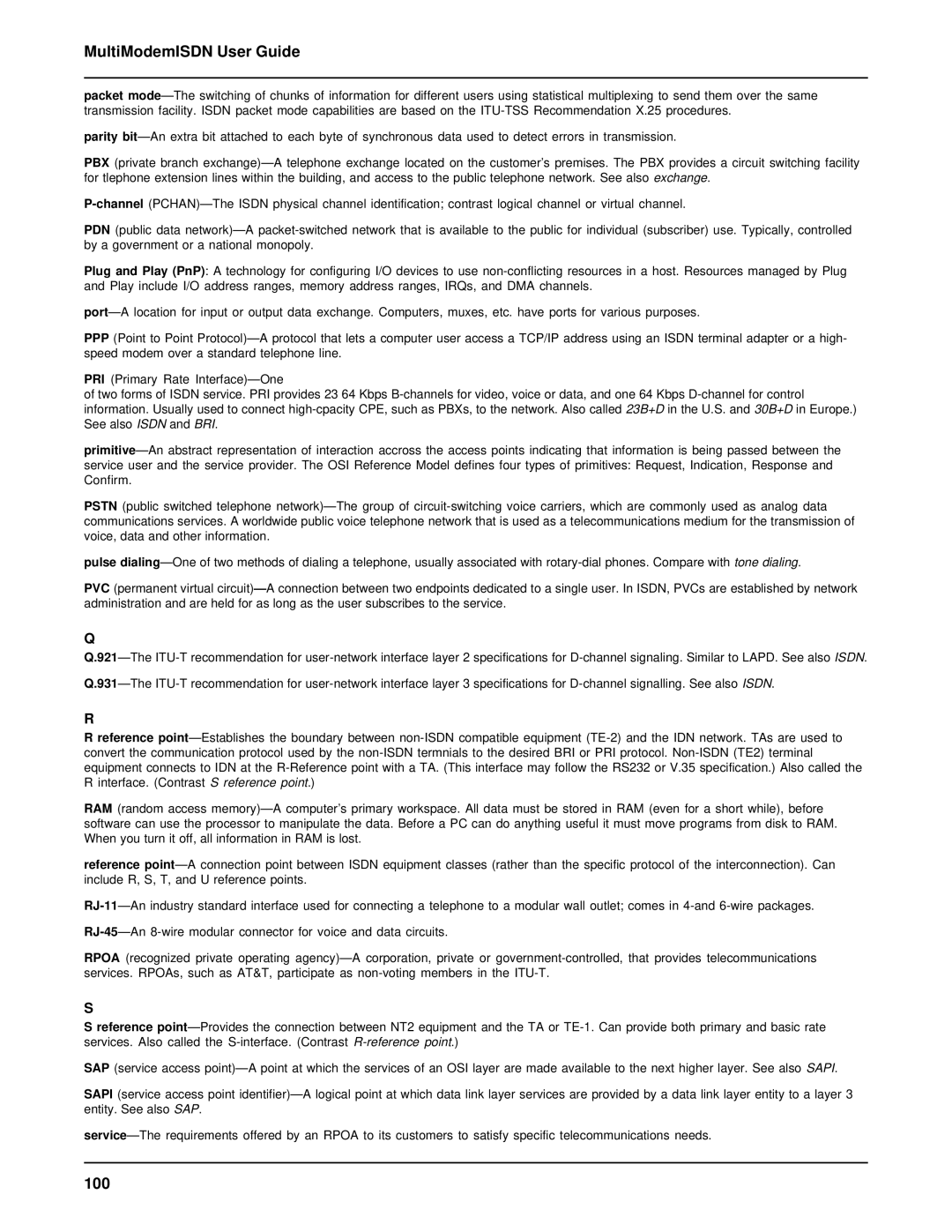
MultiModemISDN User Guide
packet mode— The switching of chunks of information for different users using statistical multiplexing to send them over the same transmission facility. ISDN packet mode capabilities are based on the
parity bit— An extra bit attached to each byte of synchronous data used to detect errors in transmission.
PBX (private branch exchange)— A telephone exchange located on the customer’s premises. The PBX provides a circuit switching facility for tlephone extension lines within the building, and access to the public telephone network. See also exchange.
PDN (public data network)— A
Plug and Play (PnP): A technology for configuring I/O devices to use
port— A location for input or output data exchange. Computers, muxes, etc. have ports for various purposes.
PPP(Point to Point Protocol)— A protocol that lets a computer user access a TCP/IP address using an ISDN terminal adapter or a high- speed modem over a standard telephone line.
PRI (Primary Rate Interface)— One
of two forms of ISDN service. PRI provides 23 64 Kbps
primitive— An abstract representation of interaction accross the access points indicating that information is being passed between the service user and the service provider. The OSI Reference Model defines four types of primitives: Request, Indication, Response and Confirm.
PSTN (public switched telephone network)— The group of
pulse dialing— One of two methods of dialing a telephone, usually associated with
PVC (permanent virtual
Q
Q.921— The
Q.931— The
R
R reference point— Establishes the boundary between
RAM (random access memory)— A computer’s primary workspace. All data must be stored in RAM (even for a short while), before software can use the processor to manipulate the data. Before a PC can do anything useful it must move programs from disk to RAM. When you turn it off, all information in RAM is lost.
reference point— A connection point between ISDN equipment classes (rather than the specific protocol of the interconnection). Can include R, S, T, and U reference points.
RPOA (recognized private operating agency)— A corporation, private or
S
S reference point— Provides the connection between NT2 equipment and the TA or
SAP (service access point)— A point at which the services of an OSI layer are made available to the next higher layer. See also SAPI.
SAPI (service access point identifier)— A logical point at which data link layer services are provided by a data link layer entity to a layer 3 entity. See also SAP.
service— The requirements offered by an RPOA to its customers to satisfy specific telecommunications needs.
